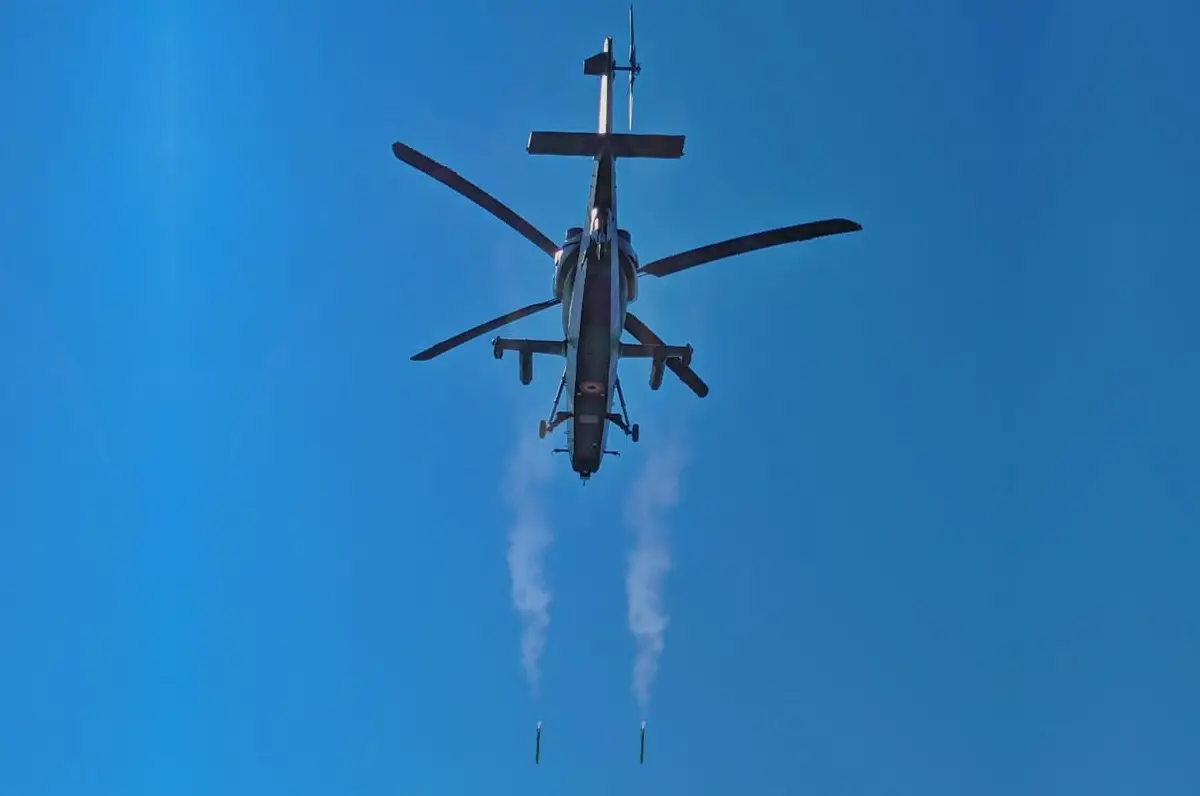The Indian Army Prachand Light Combat Helicopter (LCH), designed and manufactured by Hindustan Aeronautics Limited (HAL), recently conducted its inaugural firing of 70mm unguided rockets and 20mm turret guns with resounding success. This achievement, both in day and night conditions, was witnessed by Lieutenant General AK Suri, the Director General of Army Aviation. The live firing test showcased the formidable armament capability of the Light Combat Helicopter Prachand, reinforcing its position as a game-changing asset for the Indian armed forces. The Prachand was developed under Project LCH and has garnered orders from both the Indian Air Force and the Indian Army. Notably, it boasts the highest flight ceiling among all attack helicopters globally, making it a vital asset for operations in high-altitude theaters.
The LCH Prachand is capable of performing a wide range of missions, including anti-infantry and anti-armor roles, air defense against slow-moving aerial targets, counter-insurgency operations, counter-surface force operations, enemy air defense operations destruction, and urban warfare support, among other functions. the helicopter is equipped with stealth profiling, armor protection, and advanced camouflage measures to minimize its radar cross-section. The helicopter is armed with the M621 cannon incorporated into a Nexter-built THL 20 turret, along with various missile options, including anti-tank guided missiles and air-to-air missiles. Furthermore, it can carry 70mm FZ275 LGR rockets, providing a versatile arsenal for attacking a wide range of targets.

The LCH is furnished with a glass cockpit which accommodates an Integrated Avionics and Display System (IADS) which used an array of multifunction displays in conjunction with the onboard target acquisition and designation (TADS) system. The LCH is equipped with an integrated data link, which enables the type to participate in network-centric operations by facilitating the transfer of mission data to other platforms, comprising both airborne and ground-based elements. The onboard sensor suite is Elbit CoMPASS, produced locally by Bharat Electronics Limited. It consists of a CCD camera, a forward looking infrared (FLIR) imaging sensor, a laser rangefinder and a laser designator to facilitate target acquisition under all-weather conditions, including under nighttime conditions.
The impetus for the development of the LCH Prachand came after the Kargil War in 1999, during which it became evident that the Indian armed forces lacked a suitable armed rotorcraft capable of operating in the challenging high-altitude terrain. Drawing extensively on the earlier indigenous HAL Dhruv helicopter, the LCH Prachand program significantly reduced costs while ensuring advanced performance. The successful inaugural firing of the LCH Prachand’s 70mm rockets and 20mm turret guns reaffirms its readiness to serve as a potent force multiplier, further enhancing the capabilities of the Indian armed forces. This achievement marks a significant milestone in India’s efforts to bolster its defense capabilities and strengthen national security.













